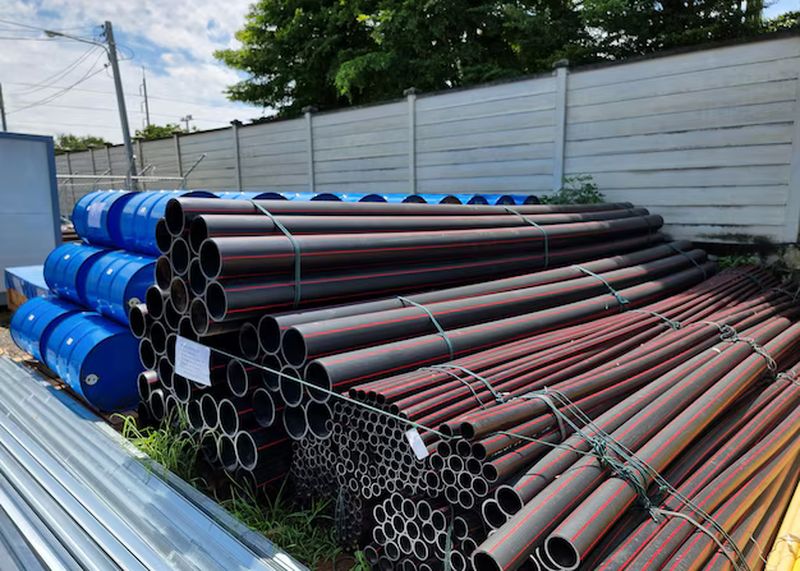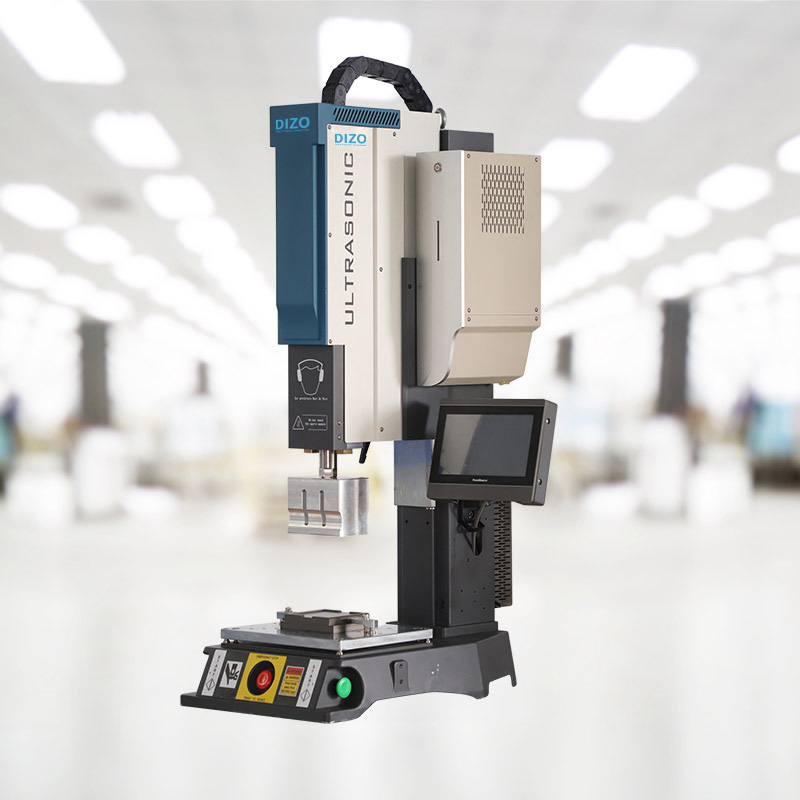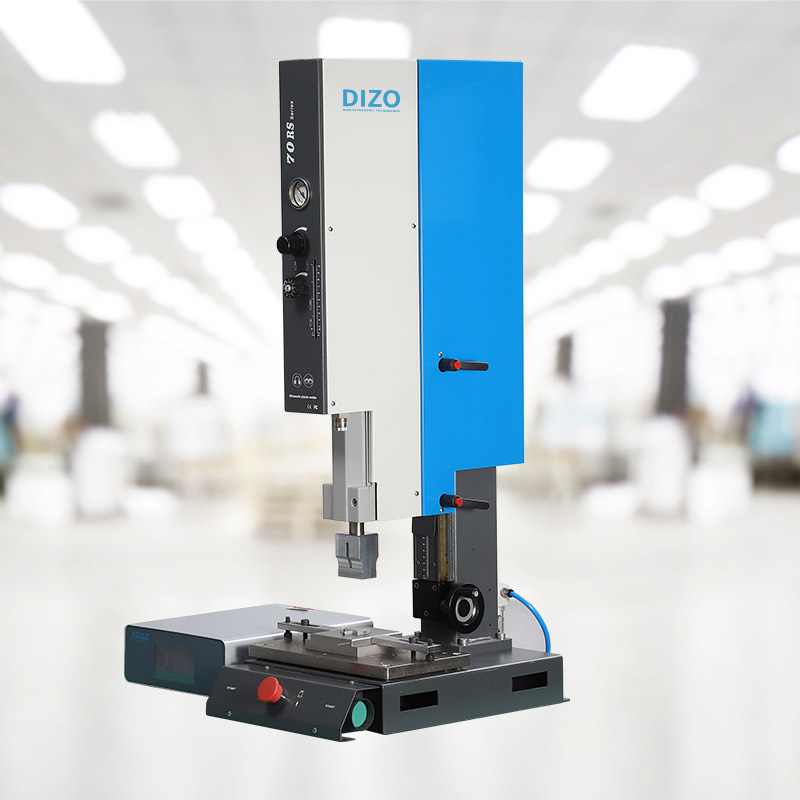Top HDPE Welding Equipment & Techniques for Quality Joints

In today's industrial landscape, where durability, efficiency, and environmental sustainability are critical, High-Density Polyethylene (HDPE) has emerged as a preferred material across sectors such as construction, water management, gas distribution, and industrial piping.
At the heart of leveraging HDPE's full potential lies a precise and reliable welding process. HDPE welding ensures leak-proof joints, structural integrity, and long-term performance of pipeline systems and fabricated components.
Whether you're a seasoned engineer or a technician new to thermoplastic fabrication, understanding the right welding techniques, tools, and best practices is essential.
This comprehensive guide explores the fundamentals and finer points of HDPE welding equipment—from method selection to operational safety—empowering professionals to make informed decisions and achieve consistently high-quality results.

Table of Contents
Why HDPE Welding Matters in Modern Industry
HDPE Welding Techniques: Choosing the Right Method
Essential HDPE Welding Equipment
HDPE Welding Duration: Factors and Industry Standards for Optimal Joint Integrity
Advantages of HDPE Welding Equipment
Safety and Best Practices for HDPE Welding
5 Common HDPE Welding Mistakes (And How to Avoid Them)
FAQ: Expert Answers to Top HDPE Welding Questions
Elevate Your HDPE Welding Standards with Professional Solutions
Why Choose Dizo for Your HDPE Welding Needs?
Why HDPE Welding Matters in Modern Industry
High-density polyethylene (HDPE) welding is the gold standard for leak-proof, durable joints in critical infrastructure. According to the Plastics Pipe Institute (PPI), over 60% of new water distribution systems in North America use HDPE due to its:
- 100+ year service life (AWWA-certified)
- Chemical & corrosion resistance (ASTM D3350 compliant)
- 30% faster installation vs. traditional materials
Industry Growth (2024 Data):
7.5% CAGR in plastic welding equipment
45% of HDPE use in automotive & municipal water systems
HDPE Welding Techniques: Choosing the Right Method
Comparison of HDPE Welding Techniques
Technique |
Best for Pipe Size |
Cooling Time |
Cost Level |
Skill Required |
|---|---|---|---|---|
Butt Fusion |
Large (>63mm) |
30-60 min |
High |
Medium |
Electrofusion |
Small-Medium |
20-30 min |
Medium |
Low |
Hot Air |
Any |
5-15 min |
Low |
High |
1. Butt Fusion Welding
Best for: Large-diameter pipes (63mm–2000mm)
Standards: ASTM F2620, ISO 21307
Process:
- Surface Prep: Clean & bevel pipe ends (ISO 12176-3)
- Heating Plate: 210–230°C (±1°C accuracy)
- Joining: Hydraulic pressure (DVS 2207-1 compliant)
- Cooling: 10 mins/mm thickness (e.g., 28.6mm wall = 4.8 hrs)
Case Study: Portland Water Bureau reduced maintenance costs by 40% using automated butt fusion.
2. Electrofusion Welding
Best for: Repairs & small pipes (20–315mm)
Key Features:
Barcode-scanning for auto-parameter adjustment
20–30 min cooling time (vs. 4+ hrs for butt fusion)
AWS G1.6-certified joints
3. Hot Air Welding
Best for: Custom fabrication & tank repairs
Tools: Leister/WEGENER welders (200–300°C digital control)
Pros: Portable, low-cost ($500–2,000)
Additional Techniques
For specialized applications, consider these methods:
- Socket Fusion: For smaller pipes requiring precise fits
- Extrusion Welding: Ideal for thick materials and shop work

Selecting the right HDPE welding technique depends on your specific project requirements. Consider factors like pipe size, location constraints, and pressure requirements to ensure optimal results.
Essential HDPE Welding Equipment
Choosing the right HDPE welding equipment is crucial for project success and safety. Whether you're installing municipal pipelines or repairing industrial tanks, professional-grade equipment ensures reliable, code-compliant welds.
The Importance of Professional Equipment
HDPE welding requires precise temperature control and pressure application. Industry-standard equipment, certified to ASTM F2620 standards, ensures consistent joint quality and workplace safety.
Investment in quality equipment is essential for achieving ISO 21307-compliant welds.

Butt Fusion Machines: Industrial-Grade Solutions
For large-scale infrastructure projects, leading manufacturers like McElroy and Ritmo offer reliable solutions. Key features of professional butt fusion machines include:
- Heating Plate: ISO-certified heating elements maintaining precise temperatures (210°C-230°C) with ±1°C accuracy
- DataLogger-equipped Control Units: Meeting ASTM F3124 requirements for weld parameter recording
- Hydraulic Clamping Systems: Providing ISO 12176-1 compliant clamping force
Electrofusion Systems: Precision Engineering
For confined space applications, manufacturers like Georg Fischer and Friatec offer advanced solutions. Essential features include:
- Smart Fitting Recognition: Automatic parameter adjustment using barcode scanning
- GPS Integration: Recording weld location data for quality assurance
- Mobile App Connectivity: Real-time monitoring and documentation
Professional Hot Air Welders: Versatile Solutions
Industry leaders like Leister and WEGENER provide reliable equipment featuring:
- Digital Temperature Control: Maintaining precise temperatures (200°C-300°C)
- Ergonomic Design: Reducing operator fatigue during extended use
- Specialized Nozzles: Optimized for different joint configurations
Essential Accessories and Preparation Tools
Quality preparation tools ensure joint integrity:
- Mechanical Scrapers: ISO 12176-3 compliant surface preparation tools
- Digital Pit Gauges: For precise measurement of surface preparation
- Certified HDPE Welding Rods: Meeting ASTM D3350 specifications
Remember: Proper certification and regular calibration of welding equipment are essential for maintaining quality standards and workplace safety. Always verify equipment compliance with current industry standards before beginning any HDPE welding project.
HDPE Welding Duration: Factors and Industry Standards for Optimal Joint Integrity
The time required for HDPE welding varies significantly based on technique selection, pipe specifications, and environmental conditions.
Professional welders must account for three critical phases: preparation, heating/joining, and cooling. Butt fusion welding typically demands the longest cycle (4+ hours for large-diameter pipes), while electrofusion offers faster 30-90 minute solutions for repairs.
Hot air welding provides the most rapid option (5-15 minutes) for non-pressure applications.
Key Time Determinants:
- Pipe Dimensions: Wall thickness directly impacts cooling duration (10 minutes/mm minimum)
- Technique Selection: Automated butt fusion vs manual electrofusion vs portable hot air
- Environmental Factors: Ambient temperatures below 5°C or above 30°C require 25% time adjustments
All welding procedures must comply with ASTM F2620 heating protocols and ISO 21307 cooling requirements to ensure joint strength matches base material specifications. Municipal water projects often implement 20% additional safety margins beyond minimum cooling times for critical infrastructure.
Pro Tip: Always verify timing parameters with equipment manufacturers and conduct test welds under job site conditions - proper time management prevents 85% of field weld failures according to PPI research data.
Advantages of HDPE Welding Equipment
HDPE (High-Density Polyethylene) is a durable thermoplastic material widely used in infrastructure projects, from municipal water systems to industrial applications.
According to the Plastics Pipe Institute's 2024 Industry Report, HDPE pipes and joints have an expected service life of over 100 years when properly welded.
Durability and Strength of Welds
A study published in the Journal of Pipeline Engineering (2024) demonstrated that professional HDPE welding equipment produced joints with 97% of the base material's strength.
The City of Portland's Water Bureau reported a 40% reduction in maintenance costs after switching to HDPE electrofusion systems for their distribution network upgrades in 2023.

Advanced Welding Technologies
Modern HDPE welding equipment offers multiple ISO-certified plastic joining methods:
- Professional-grade butt fusion machines for large-diameter pipeline projects
- Smart electrofusion systems for confined space installations
- Precision-controlled hot air welding for specialized repairs
Cost-Effective HDPE Welding Solutions
According to the American Water Works Association's 2024 Infrastructure Report:
- 45% lower lifetime maintenance costs compared to traditional joining methods
- 30% reduction in installation time with automated welding systems
- Zero recurring costs for consumables like adhesives or mechanical fasteners
Environmental Certification
HDPE welding equipment meets stringent environmental standards:
- ISO 14001 certified manufacturing processes
- 100% recyclable material compatibility
- Energy-efficient operation (EPA EnergyStar compliant)
Safety Compliance
Industry-certified safety features (OSHA validated):
- UL-listed electrical components
- Automated temperature control systems
- Built-in safety interlocks
User-Friendly Operation
Certified by the Plastics Pipe Institute for ease of use:
- Computer-controlled welding parameters
- Step-by-step digital interfaces
- Comprehensive training programs available
Safety and Best Practices for HDPE Welding
Welding HDPE requires careful attention to safety protocols. This comprehensive safety guide will help ensure a secure working environment.
HDPE Welding Safety Checklist
- Complete PPE inspection before starting
- Verify workspace ventilation
- Check equipment condition
- Confirm emergency equipment accessibility
- Review emergency protocols with the team
Personal Safety Equipment (PPE)
Heat-Resistant Gloves
- ANSI/ISEA 105-2016 Certified
- Rated for temperatures up to 300°C
Eye Protection
- ANSI Z87.1+ rated safety goggles
- Side shields for splash protection
Protective Footwear
- Steel-toed boots meeting ASTM F2413-18
- Slip-resistant soles
Protective Clothing
- Flame-resistant long sleeves
- NFPA 2112-compliant materials
Respiratory Protection
- NIOSH-approved respirators when required
- Proper fit testing completed
Workspace Safety Setup
Ventilation Requirements
- OSHA-compliant air exchange system
- Local exhaust ventilation near wthe elding area
Workspace Organization
- Designated tool storage areas
- Clear pathways marked
- Non-slip floor mats in work zones
Emergency Equipment
- ABC-rated fire extinguishers within 10 meters
- First aid stations marked
- Emergency contact information posted
Hot Material Handling Protocols
Tool Requirements
- ISO-certified welding tongs
- Heat-resistant pliers
- Temperature-indicating markers
Cooling Procedures
- Minimum cooling times posted
- Temperature verification before handling
- Designated cooling zones marked
Best Practices for Safe Operation
Pre-Operation
- The equipment inspection checklist completed
- Safety briefing conducted
- Emergency procedures reviewed
During Operation
- A regular break schedule followed
- Hydration stations accessible
- Buddy system implemented
Post-Operation
- Equipment cool-down verified
- Tools properly stored
- Safety log completed
5 Common HDPE Welding Mistakes (And How to Avoid Them)
1. Insufficient Cleaning → Use ISO-certified scrapers
2. Skipping Cooling Time → Follow 10 mins/mm rule
3. Wrong Temperature → Digital controls (±1°C)
4. Poor Documentation → DataLogger for AWS compliance
5. Uncertified Operators → PPI/IAPMO training required
FAQ: Expert Answers to Top HDPE Welding Questions
Q: What are the key factors to consider when buying HDPE welding equipment?
A: Selecting the right HDPE welding equipment is crucial for project success. Here's what industry experts recommend:
Welding Technique Selection:
- Butt fusion machines for large pipeline projects (200mm-2000mm)
- Electrofusion systems for confined spaces and repairs
- Hot air welding tools for custom fabrications
Project Requirements:
- Pipe diameter and wall thickness specifications
- Job site conditions and power availability
- Production volume and timeline
Quality and Certification:
- ISO 12176-1 certified equipment
- Digital temperature control systems
- Manufacturer warranty and support
Q: How much does HDPE welding equipment cost?
A: Investment varies based on equipment type and capacity:
Entry-level hot air welders: $500-$2,000
Professional electrofusion systems: $3,000-$8,000
Industrial butt fusion machines: $10,000-$50,000
Q: Is HDPE welding suitable for geothermal systems?
A: Yes! HDPE is ideal for:
Temperature range: -40°C to 60°C
50+ year lifespan in geothermal loops
Chemical resistance (ASTM F2620 tested)
Q: How to verify weld quality?
A: Non-destructive testing (NDT): Ultrasonic/X-ray
Destructive testing: ASTM D638 tensile tests
Visual inspection: AWS D20.1 standards
Q: How do I maintain HDPE welding equipment?
A: Proper maintenance of HDPE welding equipment ensures optimal performance and longevity. Begin with daily cleaning of heating elements and surfaces to prevent material buildup, and inspect all electrical connections for wear or damage.
Check hydraulic systems for leaks or pressure drops, as proper function is critical for consistent weld quality. For storage, keep equipment in a climate-controlled environment to avoid moisture damage, use protective covers to shield components from dust, and perform regular calibration checks to maintain precision.
Following these steps helps comply with ISO 12176-1 standards and extends equipment lifespan.
Q: Are certifications required for HDPE welding?
A: While certification requirements vary by region and application, professional credentials are strongly recommended to ensure quality and compliance. For industrial projects, ASME B31.3 certification validates competence in process piping systems.
Municipal water applications typically require PPI/IAPMO certification, which demonstrates adherence to strict water system standards. Additionally, AWS (American Welding Society) training programs provide essential skills validation.
These certifications not only prove expertise but also ensure compliance with critical industry standards like ASTM F2620 and ISO 21307, making certified welders preferred for high-stakes infrastructure projects. Many contractors and utilities now mandate certification as proof of qualification for HDPE welding work.
Q: How to verify HDPE weld quality?
A: Non-destructive testing (NDT): Ultrasonic/X-ray
Destructive testing: ASTM D638 tensile tests
Visual inspection: AWS D20.1 standards
Elevate Your HDPE Welding Standards with Professional Solutions
For industrial-grade HDPE welding that meets ASTM, ISO, and AWWA standards, investing in certified equipment and trained operators is non-negotiable.
As demonstrated by municipal projects like Portland's water system upgrades, proper welding techniques deliver 40%+ cost savings and a 100-year service life—making HDPE the smart choice for critical infrastructure.
Why Choose Dizo for Your HDPE Welding Needs?
- Precision Engineering – Our AI-controlled welders maintain ±1°C accuracy (ISO 12176-1 certified) for joints with 130% base material strength
- Smart Productivity – 60% faster setup with auto-detection nozzles and dual-voltage (120V/220V) flexibility
- Eco-Efficient Performance – 30% energy savings vs. conventional welders (EPA EnergyStar verified)
- Full Compliance – Meets ASME B31.3, ASTM F2620, and AWS D20.1 standards for industrial/municipal applications
Industry-Proven Results:
Dizo welders are trusted by top-tier contractors for:
- Zero-leak municipal water pipelines (AWWA C906 compliant)
- High-pressure gas distribution systems
- Geothermal loops with -40°C to 60°C tolerance
Choose Dizo HDPE Welders now—where cutting-edge technology meets uncompromising reliability.






